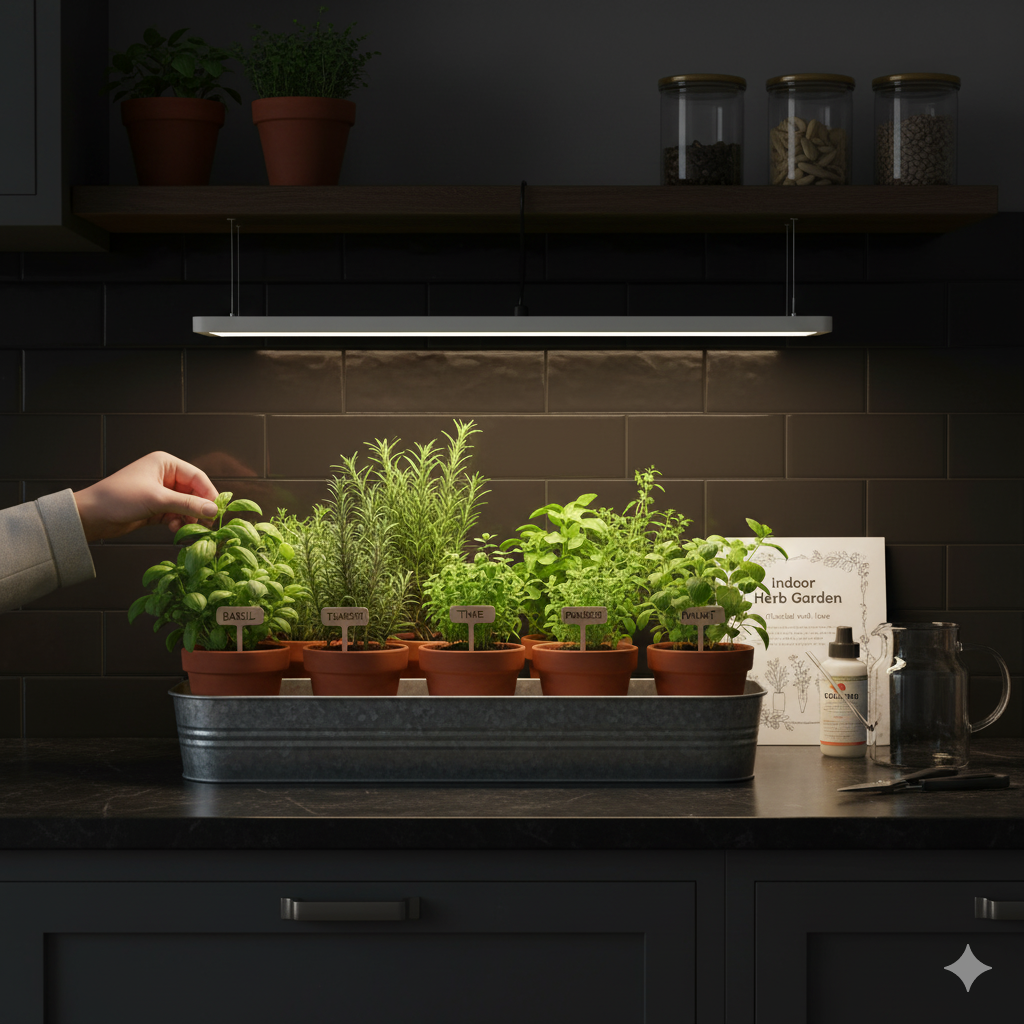
The Best Ways to Grow Herbs Indoors Without Sunlight Your goal of a fresh herb garden can still come true, even if you live in a little apartment or a house with little natural light. We’ve all been in the grocery store aisle, paid a small amount for a small bunch of basil that will turn brown in a day. Fortunately, you can bring the taste and aroma of a garden right into your home, regardless of how depressing your living room or kitchen may seem. A successful indoor herb garden that is always accessible can be created with a few simple techniques and a happy outlook.
Naturally, the biggest problem with indoor herb cultivation is a lack of sunlight. However, view this as a chance rather than a constraint. We may design our own lights rather than relying on impromptu illumination. Grow lights will become your closest friend in this situation. You don’t need to turn your house into a cutting-edge laboratory, so don’t worry. Simple, low-cost LED grow lights can be purchased at any garden supply store or online. These lights are revolutionary because they provide all of the light energy needed by plants for healthy growth. They can be fastened to a shelf or hung over your plants. They are supposed to be left on for 12 to 16 hours every day, a few inches over the herbs.
It’s similar to making a small sun just for your plants. After determining our “sun,” let’s move on to the actual plants. Herbs vary widely when it comes to indoor planting. Forgiveness varies from person to person. For beginners, parsley, chives, mint, and basil are great choices. They grow swiftly and are quite resilient. Because mint is a bit of a rebel and likes to spread, give it its own container to prevent it from encroaching on nearby plants. They like drier soil, although thyme and rosemary bloom indoors. Given that overwatering is a major contributor to indoor plant death, this is an important consideration.
After that, think about the pots and dirt. A good quality potting mix would suffice for soil. To prevent soggy roots, choose one with good drainage. Flooding is just as crucial when it comes to pottery. Select pots with bottom holes and place a tiny tray underneath to catch excess water. By doing this simple thing, you can keep your plants happy and healthy and prevent root rot. Recall that every herb needs its own pot. Meeting their specific food and water needs is made simple as a result.
Finally, a little attention can go a long way. Watering involves a precise balance. A good rule of thumb is to push your finger about an inch into the earth. If it seems dry, it is time to water. Hold off if it is still damp. Growth is also necessary, but do not overdo it. Using a half-strength liquid fertilizer every month or so during the growth season can give your herbs the boost they require. Don’t forget to harvest periodically! Shaping your herbs promotes bushier growth and produces a more abundant yield. Simply pinch off the top leaves and watch them thrive.
It’s there. It is feasible to grow your own herbs indoors, even if you live in a gloomy, dark cave. Fresh, homegrown herbs may be a year-round simple delight if you have the right plants, a little light, and a precise watering schedule.
